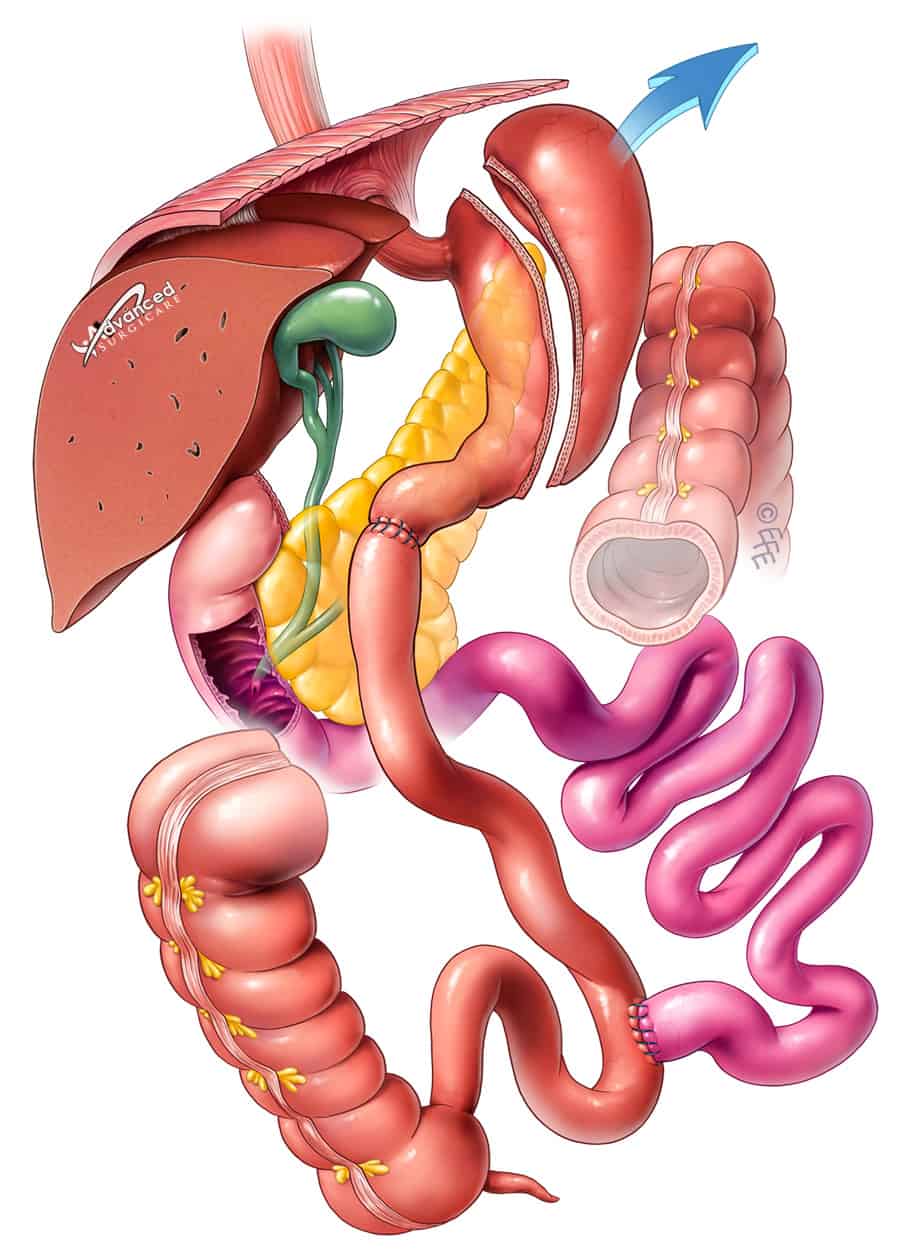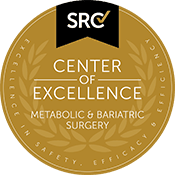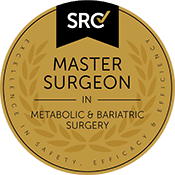
- Expertise
- Compassion
- Success
Lose the Weight and
Gain Back Your Life!
What is SADI-S Surgery?

SADI-S (Single anastomosis duodeno–ileal bypass with sleeve gastrectomy) is a newer variant of duodenal switch surgery, which for three decades has helped obese patients control their weight. The key benefit of SADI-S is that one intestinal bypass is made, rather than two, resulting in less time in surgery and reduced risk of intestinal leakage.
Sydney bariatric surgeon Dr. Vytauras Kuzinkovas achieves remarkable results with this innovative surgical solution, a two-step laparoscopic procedure that begins with the removal of 80 percent of the stomach. The first stage of the process slims down the stomach to a cylinder-shaped “sleeve” that will hold much less food. The creation of this gastric sleeve results in not just a dramatically smaller stomach, but also a suppression of the appetite-triggering hormone ghrelin.
SADI-S Procedure
SADI-S was first described in medical literature in 2007, and the number of bariatric surgeons who have attained the knowledge and skill to perform the surgery is still limited, in Sydney and worldwide.
One of the benefits of the two-stage surgical approach is that it allows for the patient to lose additional weight in the months before the final intestinal rerouting, known as a malabsorption procedure, which will shorten the path digested food takes through the intestines. During the malabsorption surgery, a patient’s new stomach sleeve is sewn to a loop of the small intestine, bypassing most of the bowel. The bypass routes food through only 10 feet of the small intestine, so that there is less time and distance for the body to absorb fat and calories.
SADI-S actually removes less of the intestine than other types of bariatric surgery, increasing the amount of nutrients your body will be able to absorb. You will need to take vitamins for the rest of your life, however.
Because only one new intestinal connection is made in SADI-S, there is less risk of contents leaking from the intestine into the body cavity. This single connection also has the advantage of preventing the possibility of future bowel obstruction, also known as an internal hernia.
As an experienced Sydney bariatric surgeon, Dr. Kuzinkovas performs both stages of SADI-S surgery using a laparoscope, a long, thin tube with a camera at the leading edge. The instrument is inserted into the abdomen through small incisions after general anesthesia is administered.

Preparing for SADI-S Surgery
Two weeks before your first procedure, you’ll be on a special diet that helps reduce fat in the abdomen and shrink the size of the liver, allowing the surgeon to more easily navigate the abdomen’s internal structures with the laparoscope. Weight loss during this period correlates with safer surgery and quicker recovery.
The diet is high in protein, and low in carbohydrates, calories and fat. Foods that are easy to digest with few solids are advised.
After your first procedure, your diet will be strictly limited to clear liquids for the first week and other types of liquids, such as fruit drinks and non-fat milk, for the second. The menu changes to pureed foods for the third and fourth weeks. By the fifth and sixth weeks, there are many foods you will be able to eat, but all in limited amounts. In addition, you will need to avoid high-fat and junk foods, which is also a good way to maintain your weight loss in future years.
To learn more about SADI-S or the other weight loss surgeries and treatments offered by Dr. Kuzinkovas, schedule your personal consultation by contacting Advanced Surgicare at one of our Sydney offices today.
Request A Free Phone Consultation
Schedule a free phone consultation with Dr. Kuzinkovas
Click Here for Free Phone ConsultOur Locations
Our doctors are true professionals and very passionate about their job.
Our team is very caring, ethical, trustworthy, friendly and devoted.
South Eastern Sydney
(Main Office)
Advanced Surgicare
Suites 501/502, Level 5
St George Private Specialist Consulting Suites
131 Princes Highway
Kogarah NSW, 2217
(entrance via South St)
Fax: 02 9588 9471







